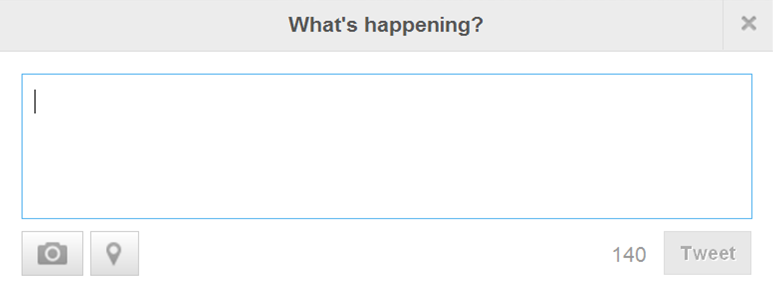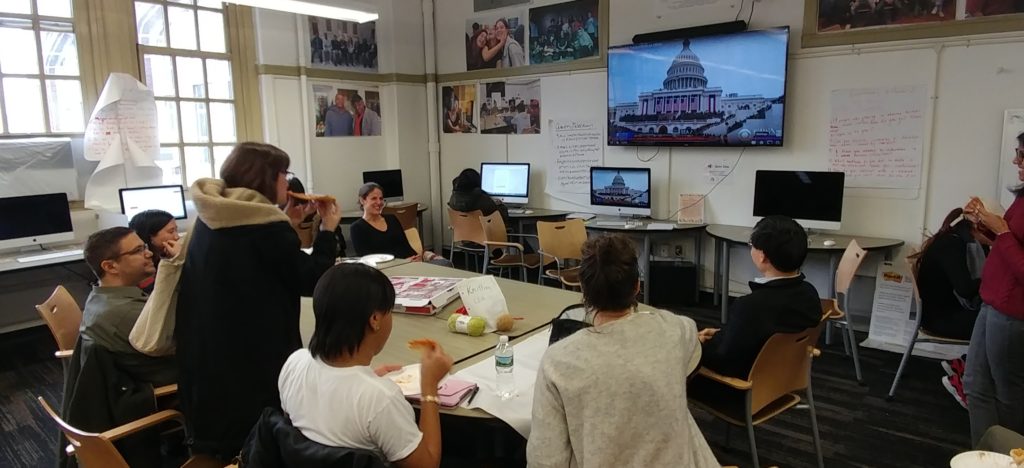Many people say, I’m talkative. People rarely describe me as quiet either online or in real life. Despite my 100+ blog posts and my 3000+ tweets, I feel like frightened every time I hit that blue button that spreads my thoughts all over the internet. I’ll still read some tweets and then think about replying for minutes, hours, maybe days only to decide not to send anything at all.

Why shouldn’t I just hit send already? Well some of the typical reasons that float through my head are “I don’t really understand enough to comment on this” or “I already know so much about this, that they couldn’t really care what I think.” or “I have a pretty good response, but it’s not JUST right. Besides, this person basically said the same thing I said.” These are excuses are pretty thin. Too thin to hide behind, infact. The reality is these excuses are just proxies for the general fear that goes along with any kind of public exposure, be it twitter, a college party, or my 9th grade student council elections.
Today I spent a lot of time thinking about my inability to hit send after reading this tweet from Dan Meyer:
It'll be tough to top this for Today's Most Interesting Tweet. How do we help new Tweachers understand that "jumping in" is always okay? pic.twitter.com/lhJTSldwJb
— Dan Meyer (@ddmeyer) April 14, 2017
Now I didn’t reply to Dan’s tweet, but not because I wan’t interested in it. There are lots of reasons people question posting something, more than just whether it’s “ok.” Possible replies rolled through my head all day but, naturally, nothing congealed into a 140 character response. In the moments before I made the choice not to hit ‘Send’ here, as per usual. Specifically I thought:
- Did somebody else already post this somewhere else?
- Is this conversation still active?
- Do I actually know enough to add to the conversation?
- Are my thoughts too big to fit into a tweet?
- Are my thoughts too small to justify a blog post?
- Is there something better I should be doing then sitting here vacillating about whether or not to hit ‘Send’?
Is that just me? I do have weird brain chemistry after all, it’s hard to gauge what’s normal. If these do float through your head that’s good, they are valid. They haven’t gone away for me, and the reality is, they’ve been there when I don’t hit send, and also when I do. These thoughts are always going to be floating through one’s head before they put something out, but that d0esn’t mean people should hide behind them. These kind of thoughts should be considered, and used for improvement, but not render you to silence. Let me just go through and respond to these thoughts so you won’t have to next time (You’re welcome).
- Did somebody else already post this somewhere else? – Well, this isn’t as important of a question as “Did YOU post about this yet?” YOU are the only person in the world working in your context, with your population, and your ideas matter.
- Is this conversation still active? – If you’re saying something relevant, a new conversation will start. If not, you just got the last word.
- Do I actually know enough to add to the conversation? – If you don’t, the best experts in the world may read your tweet and point you in the right direction. Besides, if that’s your concern, not posting means you’re just going to be stuck there with your ignorance.
- Are my thoughts too big to fit into a tweet? Are my thoughts too small to justify a blog post? – Well, write the post and tweet it. Or, write a bunch of tweets and put it on your blog.
- Is there something better I should be doing than sitting here vacillating about whether or not to hit ‘Send’? – Nope. If it’s important enough for you to think about it for this long, it’s only going to help your brain to continue thinking about it with friends on the internet.
Hopefully this will might help others who hesitate before tweeting and blogging. I was in the middle of hesitating about writing this, but then I started watching this video about a guy who was hesitating about posting a song to soundcloud, but then he did and it ended blowing up. Sure this guy was a talented artist, and he made a really good song. You can hear his doubts in between the rants of Gary Vaynerchuk who owns the youtube channel. Gary V is a social media guru and one of the big things he talks about is the importance of just putting your stuff out there and letting the world decide. Seemed relevant.



